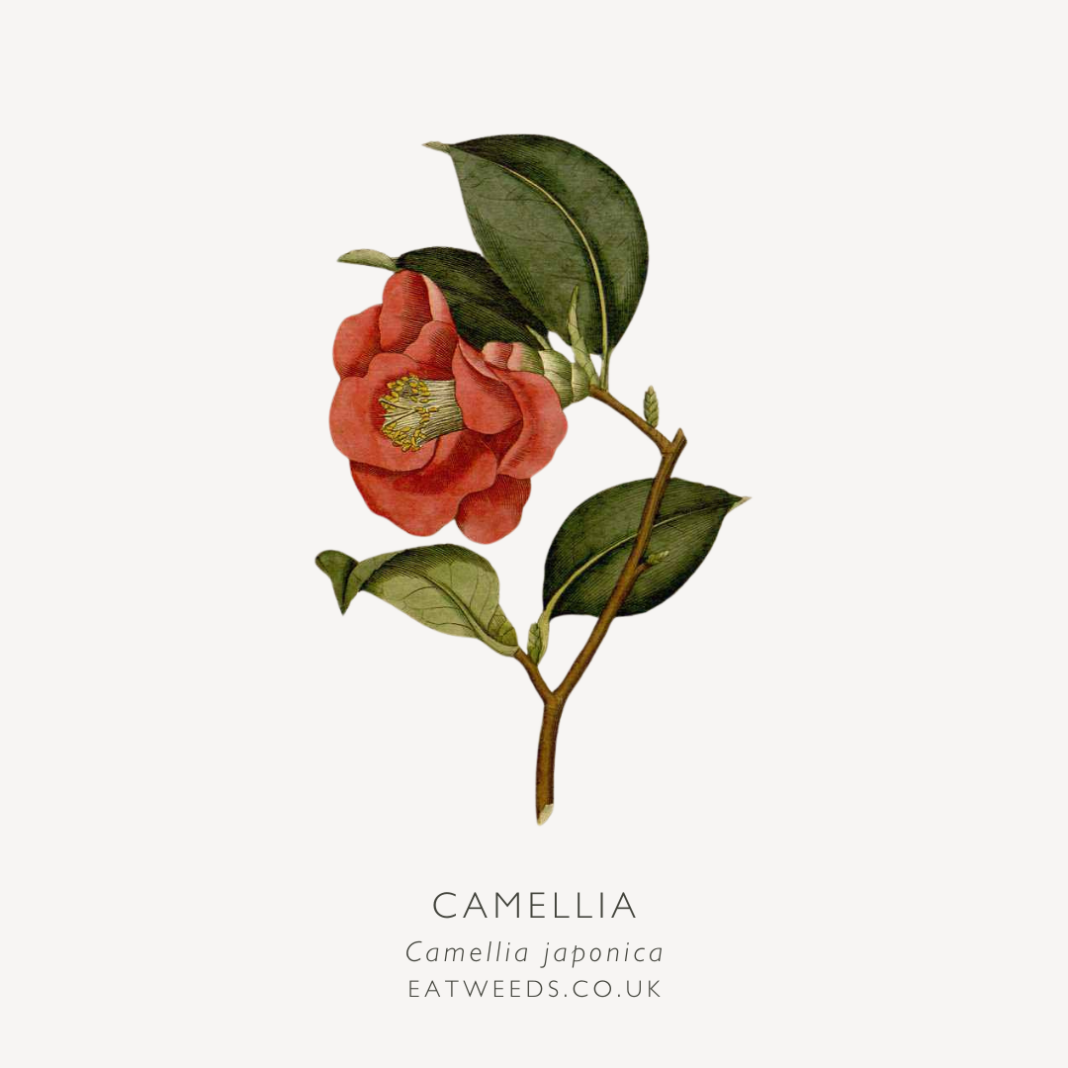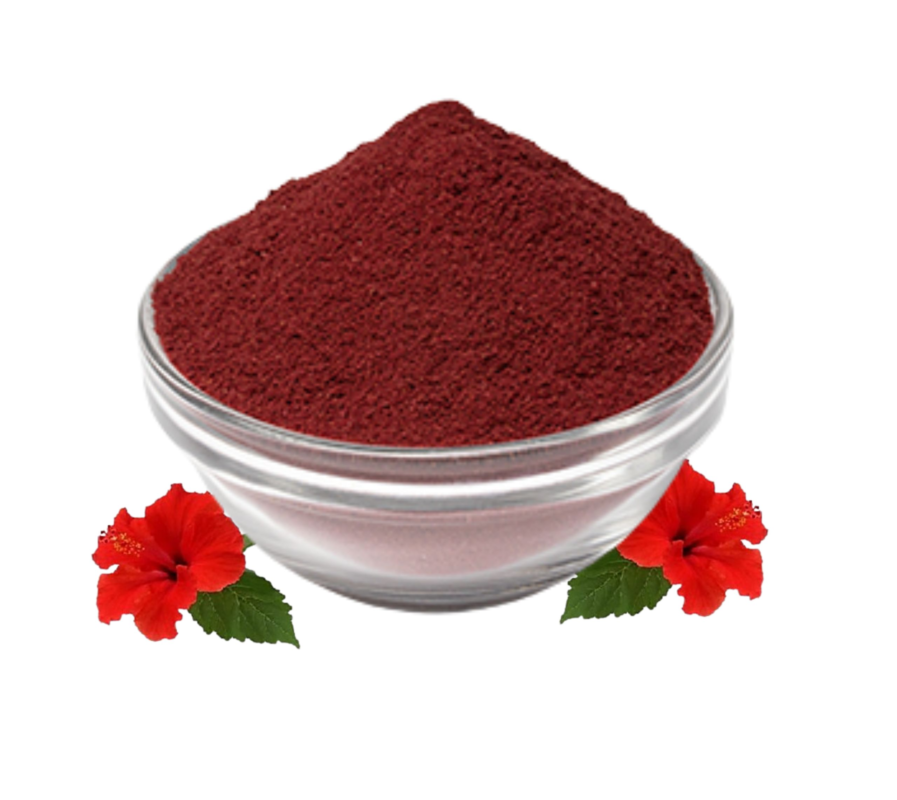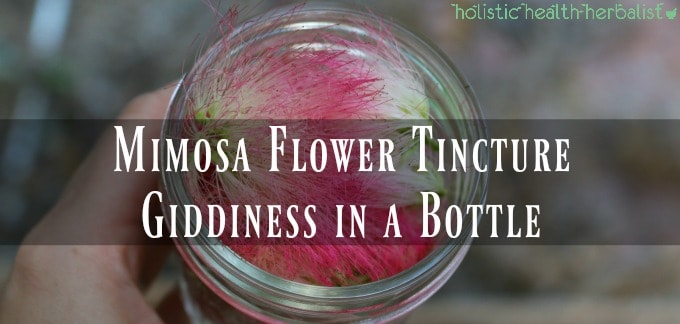Common name
Common camellia, Japanese camellia, tsubaki
Scientific name
Camellia japonica L.
Family
Theaceae
Botanical description
Camellia japonica is an evergreen shrub or small tree that can grow up to 10 meters tall. It has alternately arranged, simple, glossy, dark green leaves with serrated margins. The flowers are large, showy, and typically red, pink, or white in colour, appearing from late winter to early spring. The fruit is a globose capsule containing several seeds.
Status
Cultivated and naturalised in various parts of the world.
Habitat and distribution
Native to Japan, Korea, and China. It is widely cultivated as an ornamental plant in temperate regions worldwide.
Parts used for food
Young leaves, flowers, and seeds.
Harvest time
Young leaves can be harvested throughout the year, while flowers are collected during the blooming period.
Food uses
People use the dried flowers as a vegetable and the leaves as a substitute for tea.
In Japan, the dried flowers of Camellia are used in cooking, either as a vegetable or mixed into sticky rice to create a delicious dish called mochi.
The petals, which are rich in antioxidants and have a lovely fragrance, can also be used as a beautiful garnish to elevate any meal.
Camellia oil, derived from the seeds of C. japonica, is another culinary gem. While it’s not as widely produced in Japan as it is in China, this oil is gaining recognition as a heart-healthy cooking oil.
Rich in oleic acid, a type of fat that helps lower bad cholesterol, camellia oil has even been shown to make fried foods taste better than those cooked in regular oil.
Roasted C. japonica leaf, particularly those that have been roasted for a longer time, show promise as a tasty, fat-blocking ingredient in various food products.
The flowers are packed with carbohydrates, protein, omega-3 fats, and important minerals, so they could be a nutritious and functional addition to many different foods.
Nutritional profile
Camellia japonica leaves contain polyphenols, including flavonoids and catechins. The seed oil is rich in oleic acid and other unsaturated fatty acids.
Camellia Recipes
Traditional medicine uses
In traditional Chinese medicine, Camellia japonica has been used to treat various ailments, including bleeding, inflammation, and digestive disorders.
The leaves and flowers have been used in folk medicine for their astringent and hemostatic properties.
Preclinical studies have revealed that different parts of the plant, especially the leaves and flowers, contain compounds that could help fight disease and promote overall health.
One of the most impressive features of C. japonica is its antioxidant power. The petals, in particular, are loaded with phenolic compounds and flavonoids that can scavenge harmful free radicals.
In traditional medicine, C. japonica flowers and leaves have been used as functional herbs to treat various ailments.
Modern research suggests that the plant’s medicinal benefits may stem from its ability to shield against oxidative damage, lipid peroxidation, and DNA damage caused by reactive oxygen species (ROS).
The leaf extracts have also been shown to inhibit an enzyme involved in carbohydrate digestion, which could potentially help manage diabetes.
The leaf and flower extracts have demonstrated antibacterial, antiviral, and antifungal properties.
The oil and extracts have been found to reduce inflammation markers and pathways, suggesting possible applications for treating inflammatory conditions.
And some extracts have even shown anti-cancer effects against several cancer cell lines.
Exciting preliminary studies also point to C. japonica‘s potential in oral health, wound healing, stomach protection, and treating conditions like high uric acid levels.
The fruit extract, in particular, has exhibited strong antioxidant activities and the ability to reduce ROS levels in breast cancer cells by activating a protective pathway called Nrf2 [12].
It has even shown potential anti-metastatic effects by inhibiting breast cancer cell migration in a lab setting.
Other uses
Camellia japonica is widely cultivated as an ornamental plant for its attractive flowers. The seed oil has been used in cosmetics and as a hair oil.
Safety notes
Camellia japonica is generally considered safe when consumed in normal amounts as food or tea. However, the plant contains saponins, which can be toxic in large doses. Allergic reactions to the pollen have been reported in sensitive individuals.
References
Fernandes, L., Ramalhosa, E., Pereira, J.A., Saraiva, J.A. and Casal, S. (2020) ‘Borage, camellia, centaurea and pansies: Nutritional, fatty acids, free sugars, vitamin E, carotenoids and organic acids characterisation’, Food Research International, 132, p. 109070. doi: 10.1016/j.foodres.2020.109070.
Kanth, B.K., Lee, K.Y. and Lee, G.-J. (2014) ‘Antioxidant and radical-scavenging activities of petal extracts of Camellia japonica ecotypes’, Horticulture, Environment, and Biotechnology, 55(4), pp. 335–341. doi: 10.1007/s13580-014-0024-7.
Lee, Y.-J., Yang, S.-H., Choi, M.-H., Oh, D.-S. and Shin, H.-J. (2023) ‘Antioxidant and anti-obesity activities of roasted Camellia japonica leaves extract’, Korean Society of Biotechnology and Bioengineering Journal, 38(3), pp. 177–187. doi: 10.7841/ksbbj.2023.38.3.177.
Liang, H., Hao, B.-Q., Chen, G.-C., Ye, H. and Ma, J. (2017) ‘Camellia as an oilseed crop’, HortScience, 52(4), pp. 488–497. doi: 10.21273/HORTSCI11570-16.
Lim, T.K. (2014) Edible Medicinal and Non-Medicinal Plants: Volume 8, Flowers. 2014th edn. Springer.
Pereira, A.G., Cassani, L., Liu, C., Li, N., Chamorro, F., Barreira, J.C.M., Simal-Gandara, J. and Prieto, M.A. (2023) ‘Camellia japonica flowers as a source of nutritional and bioactive compounds’, Foods, 12(15), p. 2825. doi: 10.3390/foods12152825.
Pereira, A.G., Garcia-Perez, P., Cassani, L., Chamorro, F., Cao, H., Barba, F.J., Simal-Gandara, J. and Prieto, M.A. (2022) ‘Camellia japonica: A phytochemical perspective and current applications facing its industrial exploitation’, Food Chemistry: X, 13, p. 100258. doi: 10.1016/j.fochx.2022.100258.
Teixeira, A.M. and Sousa, C. (2021) ‘A review on the biological activity of Camellia species’, Molecules, 26(8), p. 2178. doi: 10.3390/molecules26082178.
Tokie, H. and Ochiai, T. (2005) ‘Effects and antioxidant properties of camellia oil as an edible oil’, Journal of the Japanese Society of Food Preservation Science, 31(5), pp. 253–260. doi: 10.5891/jafps.31.253.
Woo, Y., Lee, H., Jeong, Y.-S., Shin, G.Y., Oh, J.G., Kim, J.-S. and Oh, J. (2017) ‘Antioxidant potential of selected Korean edible plant extracts’, BioMed Research International, 2017, pp. 1–9. doi: 10.1155/2017/7695605.


